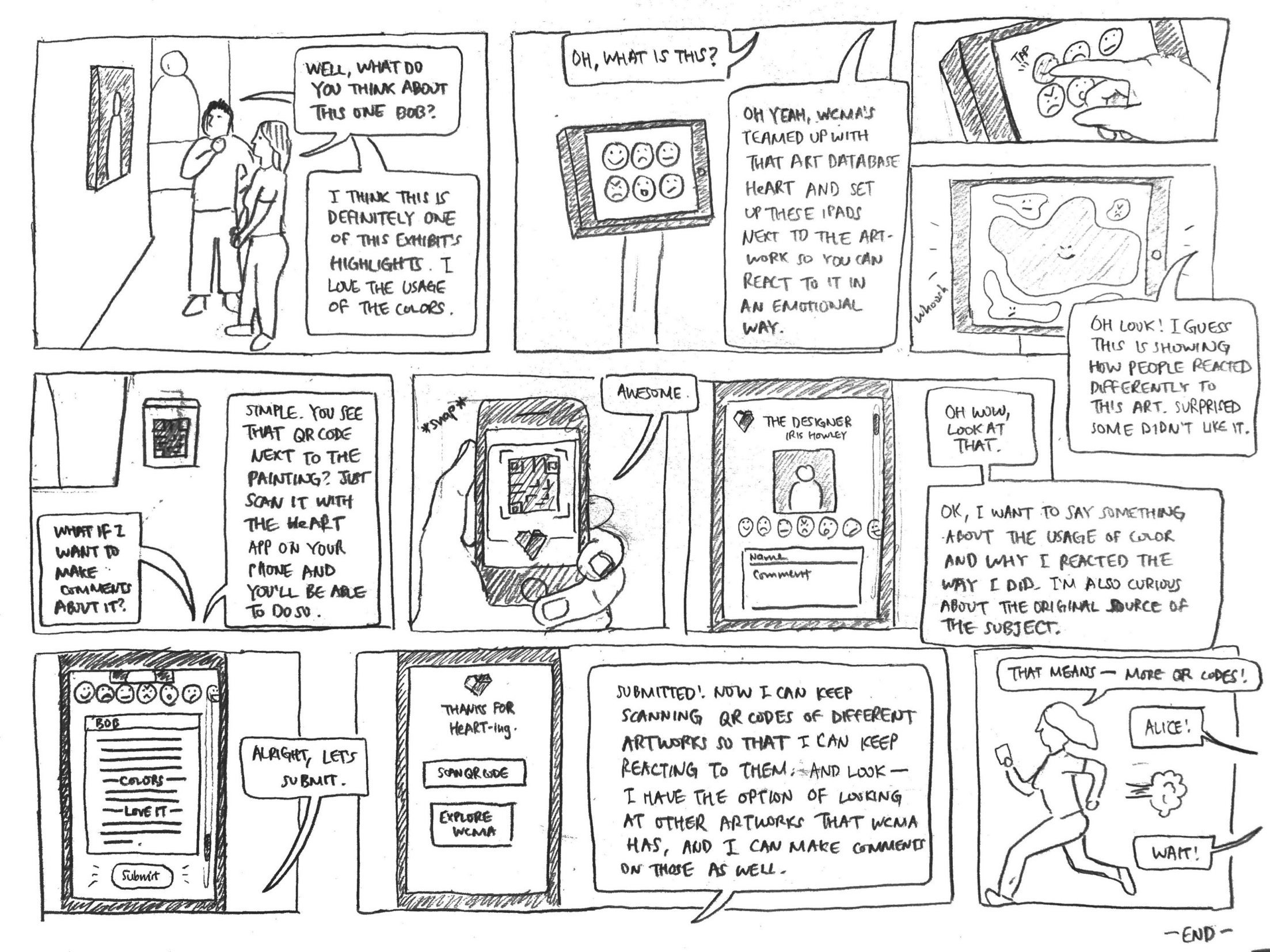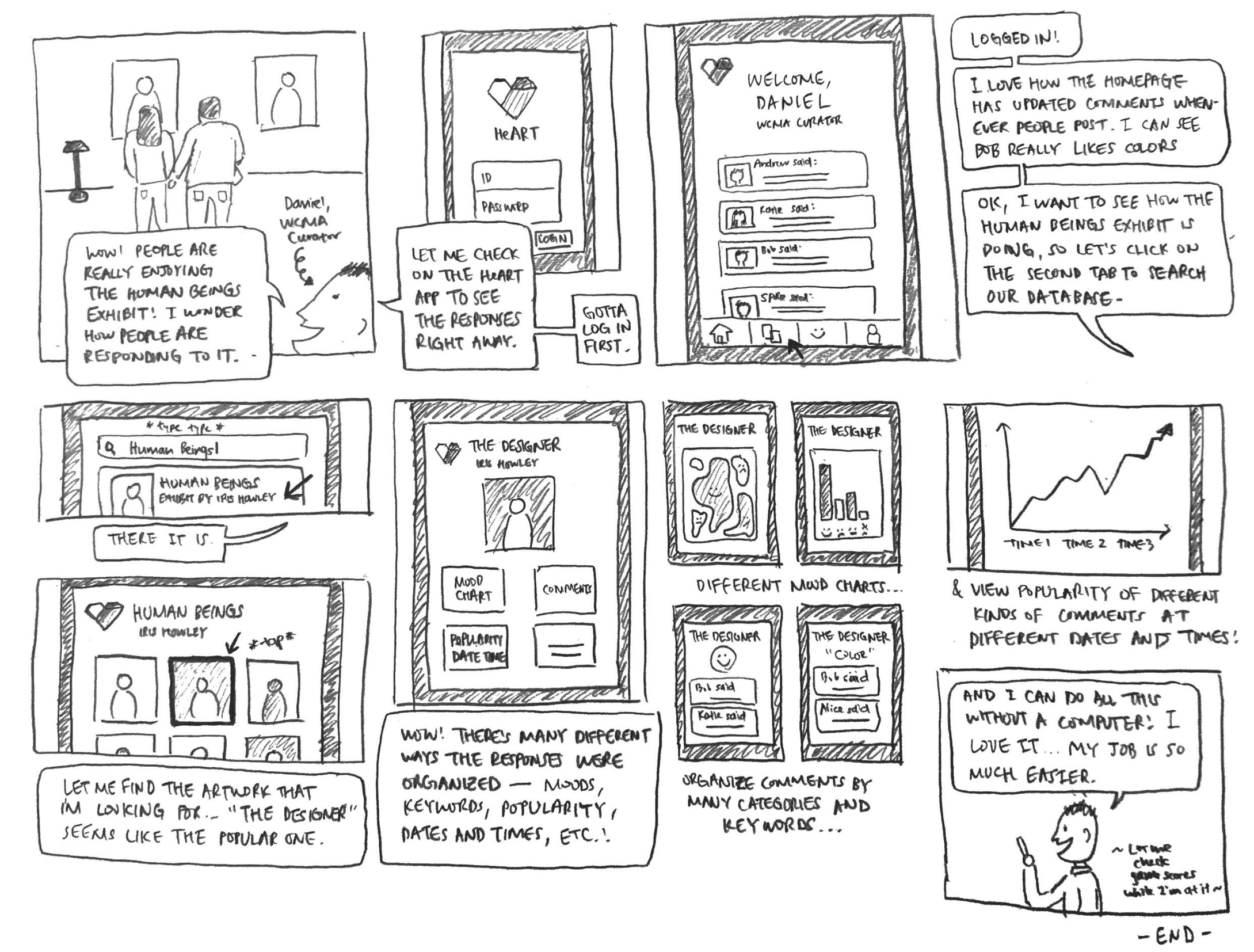why design 2:
We decided to pursue our second design (creating an application that summarizes and presents data) with a focus on tasks #3 (assigning data to specific pieces of art) and #5 (efficiently summarizing and communicating visitor feedback). First, based on Glow feedback, there appears to be multiple other groups that are focused on data collection. Since our second design assumes we have all of the data we need, it will probably be more fun and rewarding to work on something that is different from the other groups. Moreover, this is the design that most directly completes our goal of assisting curators, while also giving us room to expand our intended user base. After our contextual inquiries, we had decided that it was too difficult to try to make an app that pleased everyone. Instead, we wanted to focus on assisting curators. Even though all of our designs portray curators as the primary users, only design 2 emphasizes the aspect of improving communication of data, rather than the further collection of data. Currently, since curators already have large amounts of information, it makes more sense that the organization of this information would be the most efficient way of helping them. Since it is evident that data organization is our focus, it follows that task 5 would be one of the most crucial pieces of our process. Furthermore, our decision to focus on task 3 stems from the feedback we received in the Design Check-In. In particular, it was recommended that we not only communicate data to curators, but also “the general public to get people initially engaged with the content.” Since we decided to pursue data organization, it follows that task 3 would be the most appropriate for our design. In particular, assigning visitor feedback to specific pieces of artwork (task 3) will assist us in completing task 5 (organization), while also giving us the flexibility to provide audience engagement. For example, if visitor feedback is specified to a certain piece of art, this could promote discussion if visitors are allowed to respond to each other via the interface (increasing audience engagement). Additionally, task 6 would have been the only other task that was even remotely related to audience engagement (everything else focuses on data collection and searching). However, since task 6 wouldn’t directly utilize our data organization improvements from task 5, this would make it harder for our project to focus on both of the previously mentioned tasks. If anything, task 6 would be a possible extension for our design if we had extra time to complete it.


